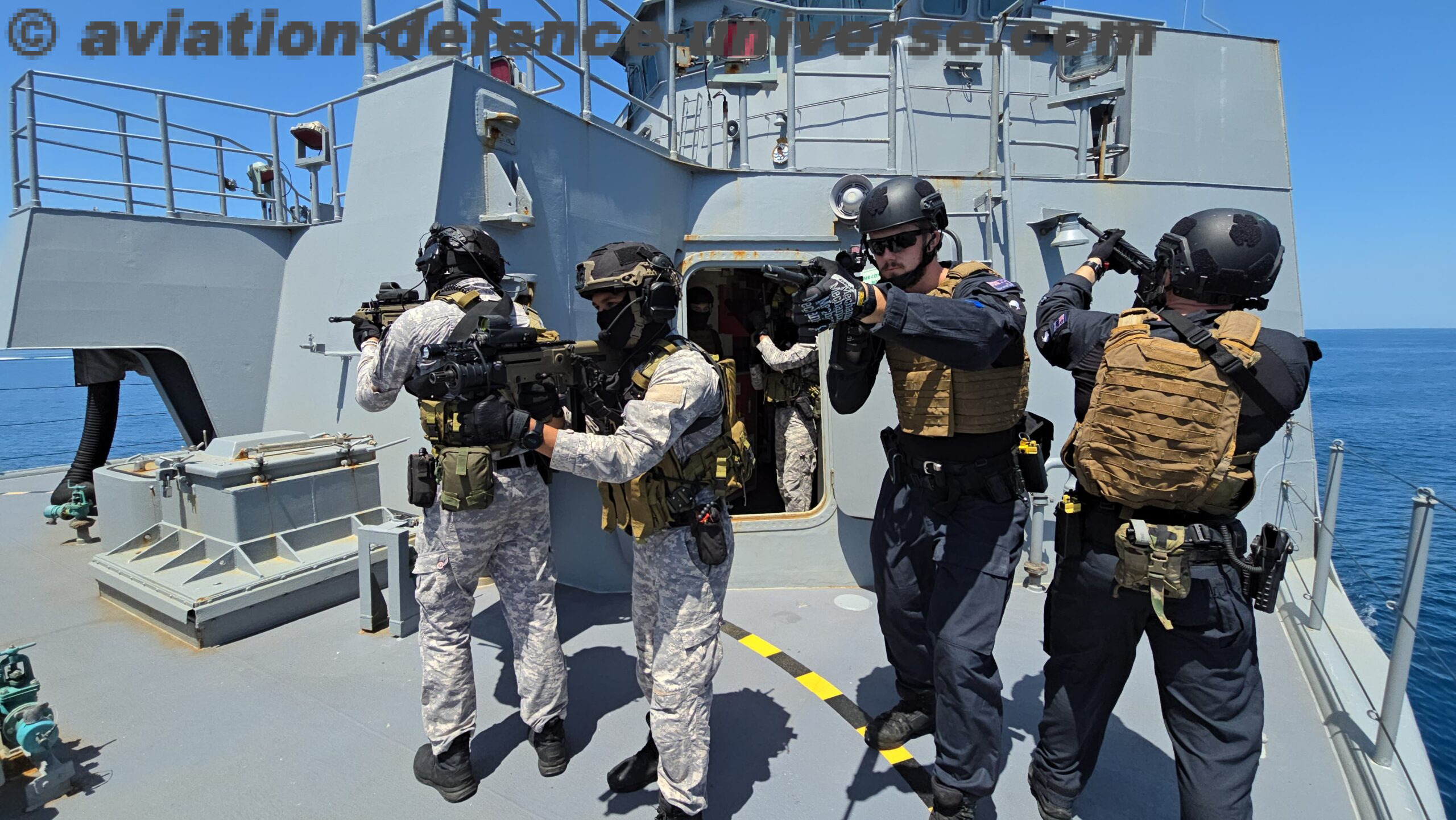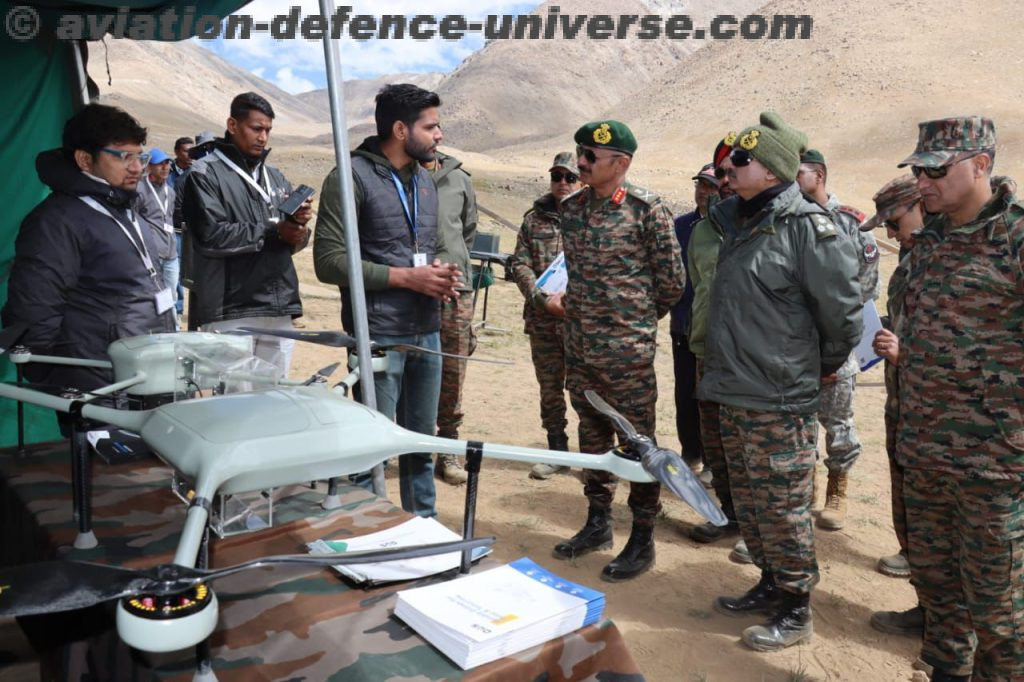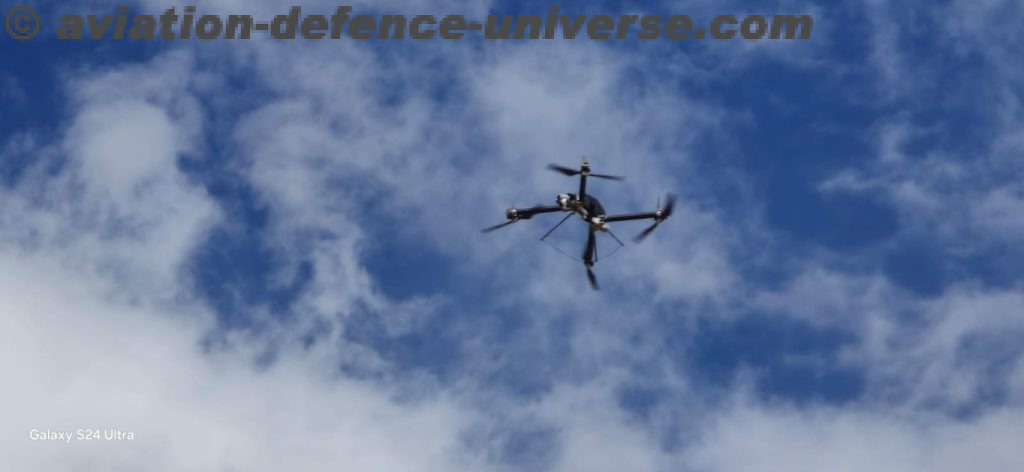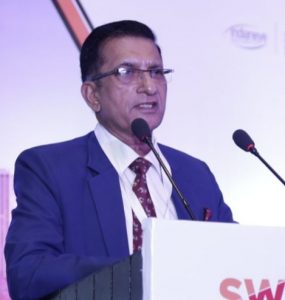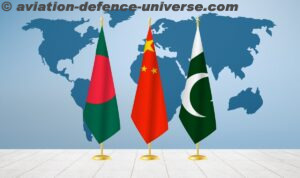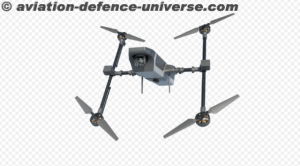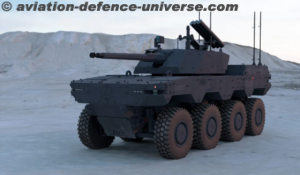- Ushers in Breakthroughs for India’s High-Altitude Defence Operations
Leh, Ladakh . 18 September 2024. Indian Army, in partnership with the Federation of Indian Chambers of Commerce & Industry (FICCI), concluded the landmark HIM-DRONE-A-THON 2 at the Wari La Pass, Ladakh, marking a significant leap in India’s defence modernisation. The event, held from 17-18 September 2024, showcased cutting-edge indigenous drone technology tailored for extreme high-altitude applications, demonstrating the Indian Army’s forward-looking strategy towards enhanced military preparedness through technology absorption.
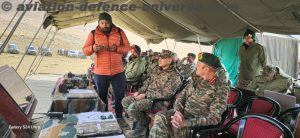 As technology continues to shape the future of warfare, drones have emerged as a game-changer, particularly in the realm of high-altitude warfare. High-altitude regions, with their rugged terrains, unpredictable weather, and limited accessibility, pose significant challenges for traditional military operations. The introduction of drones for surveillance, logistics, and combat in such regions is transforming the capabilities of modern defense forces, especially in nations like India, where the northern borders span some of the most treacherous landscapes in the world.
As technology continues to shape the future of warfare, drones have emerged as a game-changer, particularly in the realm of high-altitude warfare. High-altitude regions, with their rugged terrains, unpredictable weather, and limited accessibility, pose significant challenges for traditional military operations. The introduction of drones for surveillance, logistics, and combat in such regions is transforming the capabilities of modern defense forces, especially in nations like India, where the northern borders span some of the most treacherous landscapes in the world.
 On second day of Him-Drone-a-Thon 2024 with eight leading drone manufacturers participating, the event featured the display of 15 advanced drones, with a focus on surveillance and First-Person View (FPV) operations. Tested rigorously in the demanding environment of Wari La, with altitudes exceeding 15,000 feet, these drones showcased exceptional resilience and adaptability, reinforcing India’s capability to deploy drone technologies in the most challenging terrains.
On second day of Him-Drone-a-Thon 2024 with eight leading drone manufacturers participating, the event featured the display of 15 advanced drones, with a focus on surveillance and First-Person View (FPV) operations. Tested rigorously in the demanding environment of Wari La, with altitudes exceeding 15,000 feet, these drones showcased exceptional resilience and adaptability, reinforcing India’s capability to deploy drone technologies in the most challenging terrains.
Senior officials from the Indian Army and Indian Air Force witnessed the event. Lt Gen Hitesh Bhalla, SC**, SM, VSM, General Officer Commanding of the Fire and Fury Corps, attended the event, underscoring the importance of innovation and indigenous technological advancements in modern warfare. Lt Gen Bhalla and other senior officers lauded the participating companies for their cutting-edge solutions, emphasising the transformative role drones play in both conventional and non-conventional warfare.
 A felicitation ceremony honoured all participating companies for their cutting-edge innovations, with special recognition given to winners in the logistics and FPV categories for their exceptional advancements. Senior officials emphasised the potential for these technologies to redefine battlefield dynamics, especially in high-altitude operations where drones can serve as force multipliers in surveillance, intelligence gathering and rapid response missions.
A felicitation ceremony honoured all participating companies for their cutting-edge innovations, with special recognition given to winners in the logistics and FPV categories for their exceptional advancements. Senior officials emphasised the potential for these technologies to redefine battlefield dynamics, especially in high-altitude operations where drones can serve as force multipliers in surveillance, intelligence gathering and rapid response missions.
The event reinforced the Indian Army’s focus on 2024 as the ‘Year of Technology Absorption’, highlighting the pivotal role drones will play in future military operations. In recent global conflicts, from Ukraine to Israel, drones have emerged as decisive assets, revolutionising traditional battlefields and enabling more agile, precise and efficient military tactics.
The Indian Army’s operations along the India-China and India-Pakistan borders often involve high-altitude areas (HAA), where human endurance is tested to its limits. Harsh weather conditions, thin air, and limited accessibility make conventional troop deployment difficult and risky. Drones, equipped with advanced technology, can offer real-time intelligence, surveillance, and reconnaissance (ISR) without the need for constant human presence.
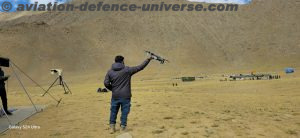 HIM-DRONE-A-THON 2 positions India to strengthen its national defence and emerge as a global hub for high-altitude drone technology. Aligned with the vision of Raksha Atmanirbharta (Defence Self-Reliance), Indian Army’s focus on indigenous innovations is advancing India’s leadership in defence technology, particularly in drones designed for extreme conditions. By leveraging these initiatives, India is propelling itself to the forefront of global defence modernisation, enhancing both military and civilian capabilities in the world’s most challenging environments.
HIM-DRONE-A-THON 2 positions India to strengthen its national defence and emerge as a global hub for high-altitude drone technology. Aligned with the vision of Raksha Atmanirbharta (Defence Self-Reliance), Indian Army’s focus on indigenous innovations is advancing India’s leadership in defence technology, particularly in drones designed for extreme conditions. By leveraging these initiatives, India is propelling itself to the forefront of global defence modernisation, enhancing both military and civilian capabilities in the world’s most challenging environments.
High-altitude warfare drones are specifically designed to operate in extreme conditions where traditional aircraft and ground vehicles might fail. These drones can perform a wide range of functions, from ISR missions to carrying payloads for logistics purposes. Drones with loitering munitions and swarm capabilities are proving to be crucial in engaging targets over long distances without risking human lives.
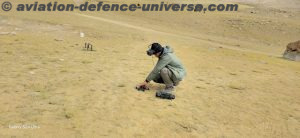 For example, ISR drones provide real-time information on enemy movements, even in hard-to-reach areas, ensuring tactical advantage. Logistics drones are becoming vital for delivering critical supplies such as food, medicine, and ammunition to soldiers deployed at high-altitude posts, significantly reducing the need for human intervention in these hazardous operations. Swarm drones, which operate in groups, are designed to overwhelm enemy defenses with their numbers, adding a new layer of strategic offensive capabilities.
For example, ISR drones provide real-time information on enemy movements, even in hard-to-reach areas, ensuring tactical advantage. Logistics drones are becoming vital for delivering critical supplies such as food, medicine, and ammunition to soldiers deployed at high-altitude posts, significantly reducing the need for human intervention in these hazardous operations. Swarm drones, which operate in groups, are designed to overwhelm enemy defenses with their numbers, adding a new layer of strategic offensive capabilities.
Drones with specialized payloads for electronic warfare (EW), signal intelligence (SIGINT), and communication intelligence (COMINT) play a critical role in intercepting enemy communications and disrupting their electronic systems. Such advanced capabilities allow defense forces to maintain a technological edge in high-stakes, high-altitude scenarios.
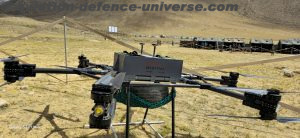 With its vast, rugged northern frontiers, India’s strategic emphasis on high-altitude warfare drones reflects its evolving defense strategy. The Indo-China border, which stretches across the Himalayan range, is one of the most sensitive regions where India faces territorial challenges. The recent stand-offs in Ladakh have highlighted the importance of maintaining constant vigilance and being able to respond quickly to any threat.
With its vast, rugged northern frontiers, India’s strategic emphasis on high-altitude warfare drones reflects its evolving defense strategy. The Indo-China border, which stretches across the Himalayan range, is one of the most sensitive regions where India faces territorial challenges. The recent stand-offs in Ladakh have highlighted the importance of maintaining constant vigilance and being able to respond quickly to any threat.
India’s push towards high-altitude drones is not just about modernization but also about ensuring sovereignty and security in these critical areas. Events like the HIM-DRONE-A-THON are helping Indian startups and tech firms collaborate with defense forces to develop and test new drone technologies that are specifically tailored for high-altitude warfare. The ultimate goal is to build a fleet of drones that can operate independently in extreme weather conditions, providing real-time support to troops on the ground.
 The integration of drones into high-altitude warfare is setting the stage for a new era in military operations. As India continues to invest in homegrown drone technologies, it will not only enhance its own defense capabilities but also position itself as a global leader in high-altitude drone warfare. High-altitude warfare drones are not just tools of the future—they are shaping the present. They are enabling armies to extend their operational reach, respond swiftly to threats, and minimize risks to human soldiers, particularly in the most inhospitable terrains. As drone technology advances, these high-altitude warfare drones will likely become an indispensable asset in maintaining peace and security along some of the world’s most challenging borders.
The integration of drones into high-altitude warfare is setting the stage for a new era in military operations. As India continues to invest in homegrown drone technologies, it will not only enhance its own defense capabilities but also position itself as a global leader in high-altitude drone warfare. High-altitude warfare drones are not just tools of the future—they are shaping the present. They are enabling armies to extend their operational reach, respond swiftly to threats, and minimize risks to human soldiers, particularly in the most inhospitable terrains. As drone technology advances, these high-altitude warfare drones will likely become an indispensable asset in maintaining peace and security along some of the world’s most challenging borders.

































